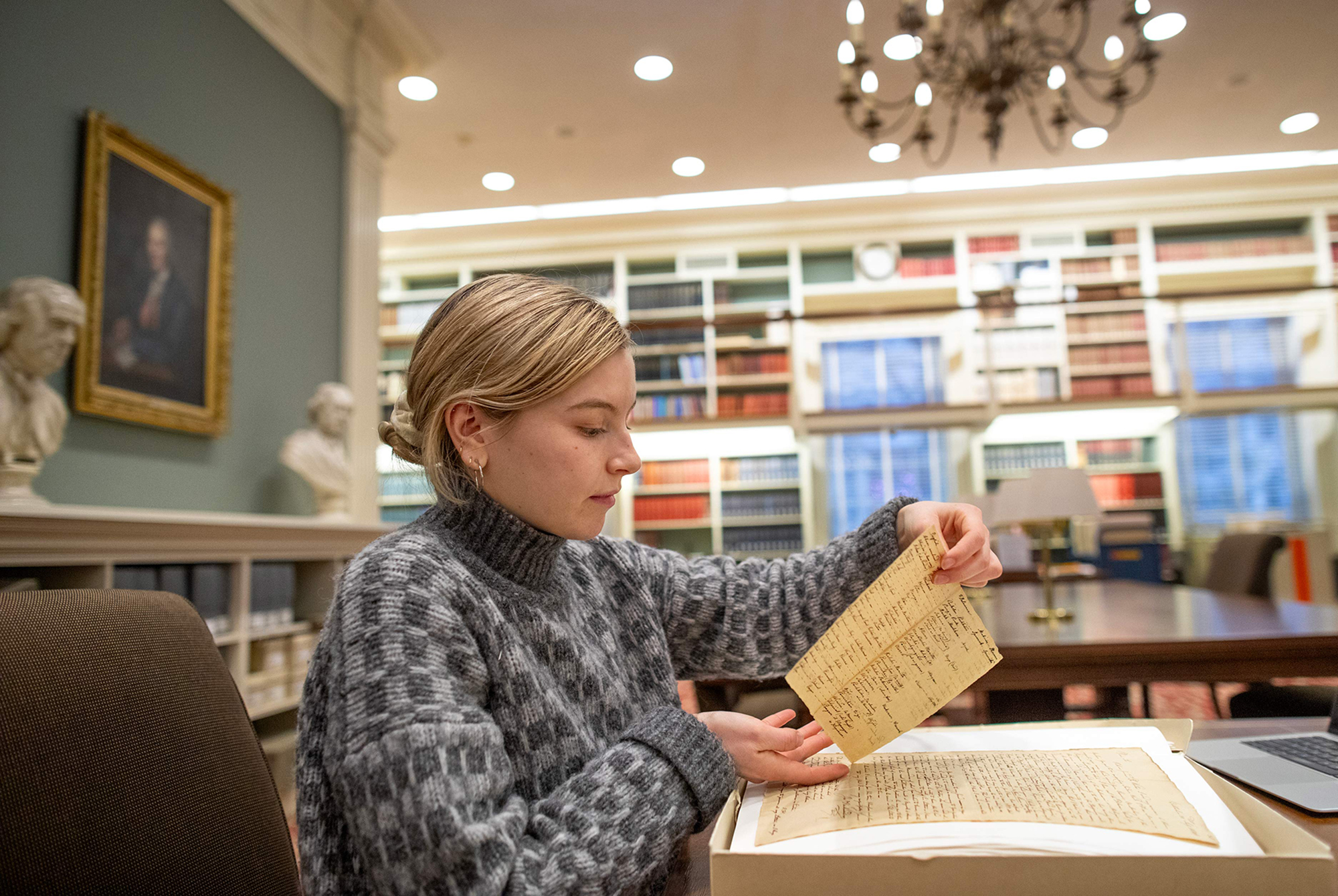The reading room at the American Philosophical Society in Philadelphia is nearly silent, except for Marian “Molly” Leech’s slow and deliberate page-turning, the fragile sheets she’s inspecting yellowed by the passage of time. Outside, rain is pounding. In the carpeted room, book-lined walls and large white busts flank several long wooden tables.
Leech, a fourth-year Ph.D. candidate in the Department of History, is there studying the personal correspondence of John Heckewelder, a missionary and linguist who, in the 1800s, lived in Gnadenhutten, Ohio, among a Lenape community that had converted to Christianity. “He was really interested in the Lenape language,” Leech says. “Of course, every colonial source is problematic, but he provides insights that Dutch colonists didn’t have in the earlier time period or weren’t interested in recording.”
The collection’s 113 private letters and other papers offer a glimpse into life several hundred years ago in what is today New Jersey, southern New York, and Pennsylvania. Heckewelder, who recorded and translated many of the area’s Lenape place names, also wrote about the Lenape’s relations with neighboring groups, as well as their views on animals.
In Leech’s research—in the reading room that day, during an ongoing fellowship at the Rijksmuseum in Amsterdam, at archives in New York and New Jersey—she has been flagging any such references to the non-human world or the fur trade, specifically those that relate to the Dutch colony of New Netherland and beaver pelts. In particular, she’s curious about the exchange of goods that took place there in the 1600s and how differently the groups doing the swapping related to the non-human world.
“Colonists didn’t just arrive and trade but claimed Native homelands as their possession,” she explains. “I’m interested in how this distorted many settlers’ views of the landscape, how it obfuscates the region’s deep Indigenous histories—histories that are often not fully discussed in colonial sources or are purposefully downplayed.”
Read more at OMNIA.








